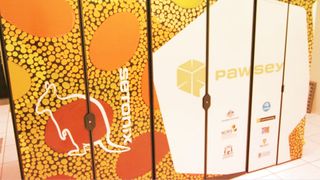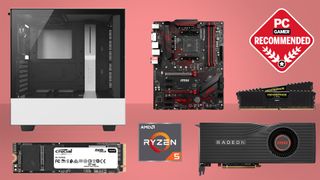The best way to stress test a supercomputer is processing a supernova
Supercomputers don't use FurMark, you won't be surprised to learn.

Imagine instead of sitting through the same boring old stress test software runs over and over again to test your new hardware, you could sit back and let your PC process radio telescope observations of dying stars. That's exactly what Pawsey Supercomputing Research Centre in Australia has been doing with its newest machine, Setonix, in order to reveal one of the most breathtaking images of a supernova's remnants I've seen in all my years of stargazing.
Named after possibly one of the most adorable animals in the known universe, the quokka (Setonix brachyurus), the AMD-powered Pawsey supercomputer is anything but adorable. The team put this new machine through one hell of a benchmark using data gathered by the 36 dish antennas of CSIRO's Askap (Australian Square Kilometre Array Pathfinder) radio telescope, and boy did it prove to be robust (via The Conversation).
Setonix was tasked with processing highly complex data—sent through a series of high-speed optical fibres—into separate images spanning hundreds of different frequencies. It then had to combine the images into their final form.
With all the data, it managed to pull together an image of the imaginatively named SNR (supernova) G261.9+05.5, which was originally brought to CSIRO's attention way back in 1967. The supernova is somewhere in the region of 13,000 light-years from our cosy home planet.
What I find really sweet is that the Setonix machine itself was decorated by artist Margaret Whitehurst of the Wajarri Yamatji people, and was appropriately "inspired by the stars that shine over Wajarri country in Western Australia’s Mid-West," the site reads.

But enough about art, back to science.
Not only was the data selected especially to test the supercomputer's hardware (which it passed with flying colours) it was also able to determine the clout of the Askap processing software, ASKAPsoft. If you're curious, Setonix is an EX model supercomputer from HPE Cray, and consists of the following:
The biggest gaming news, reviews and hardware deals
Keep up to date with the most important stories and the best deals, as picked by the PC Gamer team.
- More than 500 AMD EPYC “Milan” CPU nodes (65k cores total) - 64 cores, 2.55GHz, 2 per node, 256GB per node
- Eight 1TB High Mem CPU nodes
- Eight Data mover nodes
- Sixteen Visualization nodes
- Four Login nodes
- Connected by HPE’s Slingshot interconnect (100Gb/sec)
- Lustre file systems (14 PB [3 SSD, 11 HDD])

Best CPU for gaming: The top chips from Intel and AMD
Best gaming motherboard: The right boards
Best graphics card: Your perfect pixel-pusher awaits
Best SSD for gaming: Get into the game ahead of the rest
Sadly the rest of us are unlikely to match that kind of hardware, there are ways you can use your PC to contribute to science. Software such as Folding@Home may not be able to stress test your PC, but it can help the scientific community to find cures for cancer, ALS, Parkinson’s, Huntington’s, influenza, and others.
You can also track asteroids and potentially help study the origins of our solar system with Asteroids@Home, if you're looking to get involved with something a bit more out-of-this-world. Why not give it a go?

Screw sports, Katie would rather watch Intel, AMD and Nvidia go at it. Having been obsessed with computers and graphics for three long decades, she took Game Art and Design up to Masters level at uni, and has been rambling about games, tech and science—rather sarcastically—for four years since. She can be found admiring technological advancements, scrambling for scintillating Raspberry Pi projects, preaching cybersecurity awareness, sighing over semiconductors, and gawping at the latest GPU upgrades. Right now she's waiting patiently for her chance to upload her consciousness into the cloud.
Most Popular






